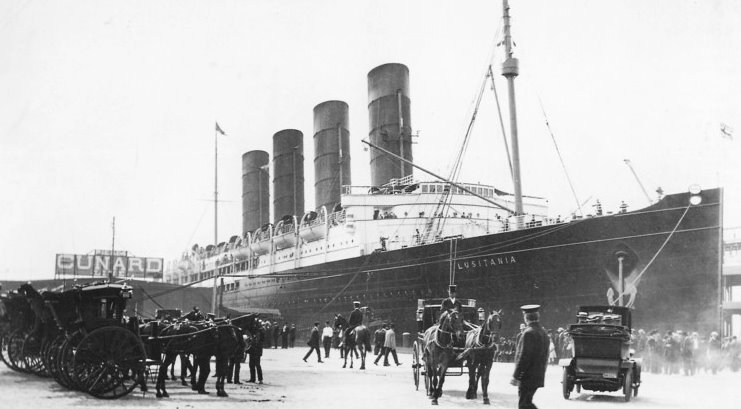RMS Lusitania (1906)
Interiors
The Lusitania looked to many different historical ages and styles to decorate her different compartments and staterooms, all luxurious.
Her First Class Lounge and Music Room on the Boat Deck was completed in Georgian style with a yellow and green colour scheme to complement the mahogany panelling. A stain glass skylight overlooked the room. It was a delightful setting. A feature fireplace sat in the centre of the wall at the end of the room. Each room was fitted with magnificent enamels. The plasterwork was unsurpassed.
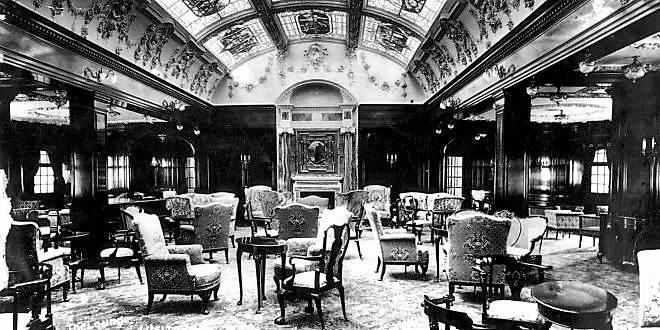
As can be imagined, the First Class Dining Room resembled a kings' palace ballroom and echoed the splendour of the French monarch, Louis XVI. There was a dome at the top of the balcony which contained segments depicting the four seasons re-enacted by Cherubim.
The sleeping quarters were also fine. The Lusitania had six standard size suites each with three rooms. Her two Regal Suites had two bedrooms, a sitting room, dining room, private bath, lavatory and pantry.
Again, different periodic styles were used to decorate the rooms. Most rooms had a French based design, resembling some of the rooms in the Palace of Versailles. This gave the impression that all the rooms were different and individual. A passenger could easily think they were staying in an exclusive grand hotel, not on a ship.
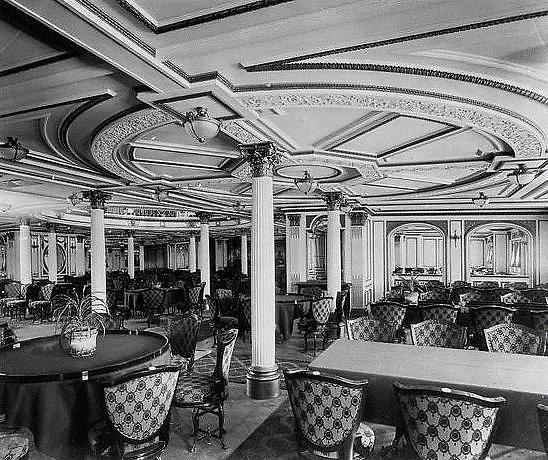
The Ensuite Rooms were situated on the Promenade Deck each with their own bath and toilet. They were not as large as the Regal Suites but a First Class passenger could not even consider complaining.
The Lusitania followed the tradition of having a Smoking Room for the gentlemen to retire to after separating from their respective partners. The room had an Italian 18th Century style. There was a stained-glass barrel-vaulted dome and two coal fires. The other six fireplaces in other rooms were electric.
There were many luxurious aspects to her design. A First Class elevator, double door to keep the heat in, reading rooms and of course the Verandah Café located on the boat deck.
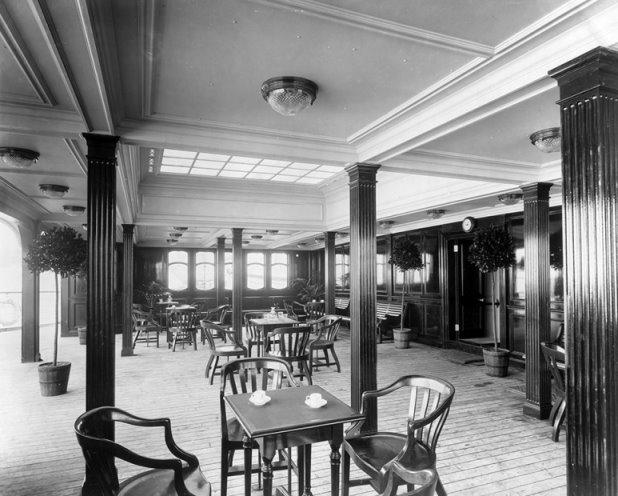
As a point of interest, the designers originally wanted a gymnasium instead of the Verandah Café but this did not happen. The Second Class rooms were not quite as luxurious as the First Class, but still remarkable. The Second Class Dining Room was one of the grandest rooms afloat of its day. The policy of the Cunard line was to provide both the First and Second Class passengers with rooms not dissimilar to those they would find in the hotel rooms they would frequent.
The different styles used throughout the ship certainly achieved this.
A Smoking Room with a barrel vaulted stained glass skyline was included for the Second Class gentlemen to enjoy.
The Drawing Room on the Promenade Deck was furnished in the style of Louis XVI. The different shades of grey and rose complimented the satinwood furniture.
The Second Class accommodation was also fine with spacious cabins. Some were bigger than those of the First Class.
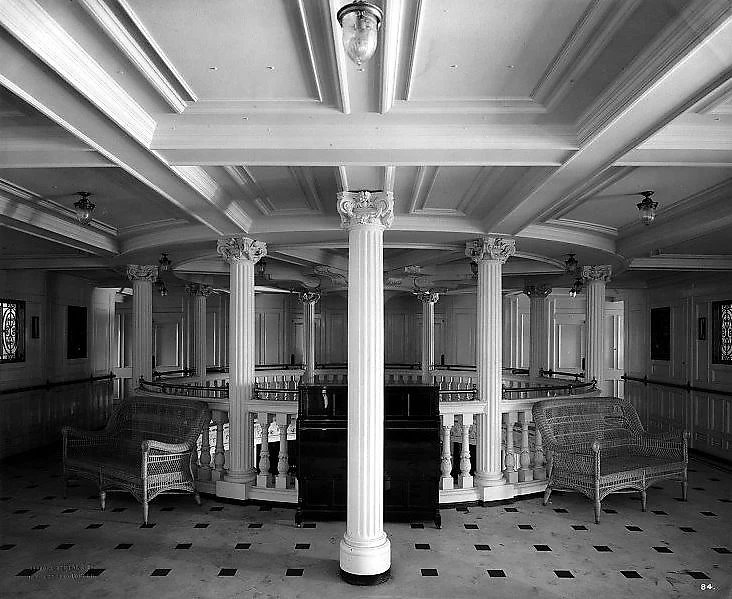
Although less opulent than the First and Second Class, the Third Class cabins and rooms when compared to other transatlantic ships of the day, would be seen to be very luxurious indeed as shown by the photograph of the Third Class Dining Room.
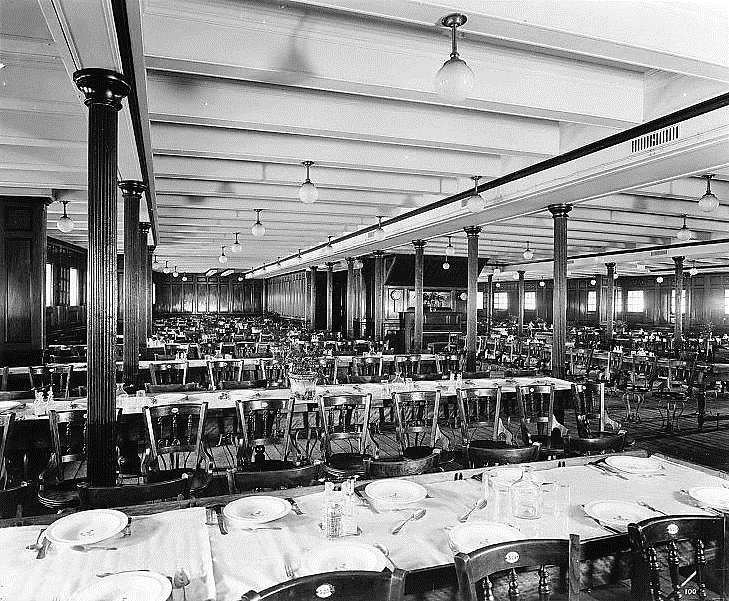
Most of the Third Class sleeping quarters were designed to hold between two and eight people.
Life on board would have been very different for the Third Class passenger. Their accommodation reflected the social class structure of the era.
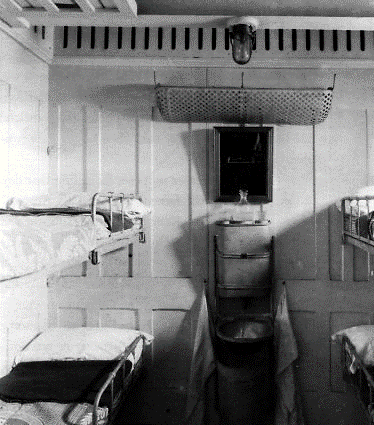
Lifeboat capacity on RMS Lusitania
In accordance with the Board of Trade Regulations of her day, the Lusitania carried 16 wooden lifeboats. By 1910, society expected the building of liners so superior that they had become practically “unsinkable” and may explain why the Titanic only carried the number of boats it did.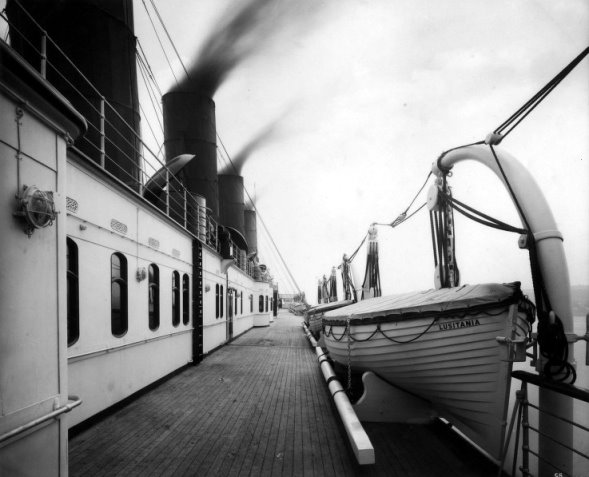
Following the loss of the Titanic, the Lusitania was refitted with 48 boats (22 wooden and 26 collapsible). Every boat was fitted with 2 chains to anchor them to the deck. This would prove disastrous later when many of the chains took too long to be released and the boats could not be used and sank with the ship.
First voyages of RMS Lusitania
On 7 September 1907, under the command of Captain James B. Watt, the Lusitania sailed on her maiden voyage to New York. She carried over 3,000 passengers and crew. Her passengers were delighted with her. The standards of accommodation and services were well documented. Most Third Class passengers enjoyed the voyage. Dining on her was like eating in the best restaurants or hotel anywhere.
She arrived in New York on 13 September 1907. Her voyage lasted 5 days and 54 minutes so she did not recapture the Blue Riband, a great disappointment to the authorities and owners.
Her second voyage was quicker and she averaged 23.993 knots crossing the Atlantic in less than 5 days. She recaptured the Blue Riband which the British would hold for the next 22 years until the German liner Bremen earned it in 1929.
